The Gear Used By Jack White on The White Stripes’ Elephant
As the White Stripes entered their stadium-chant pomp, here’s the guitars, amps and pedals that Jack White used to devastating effect.
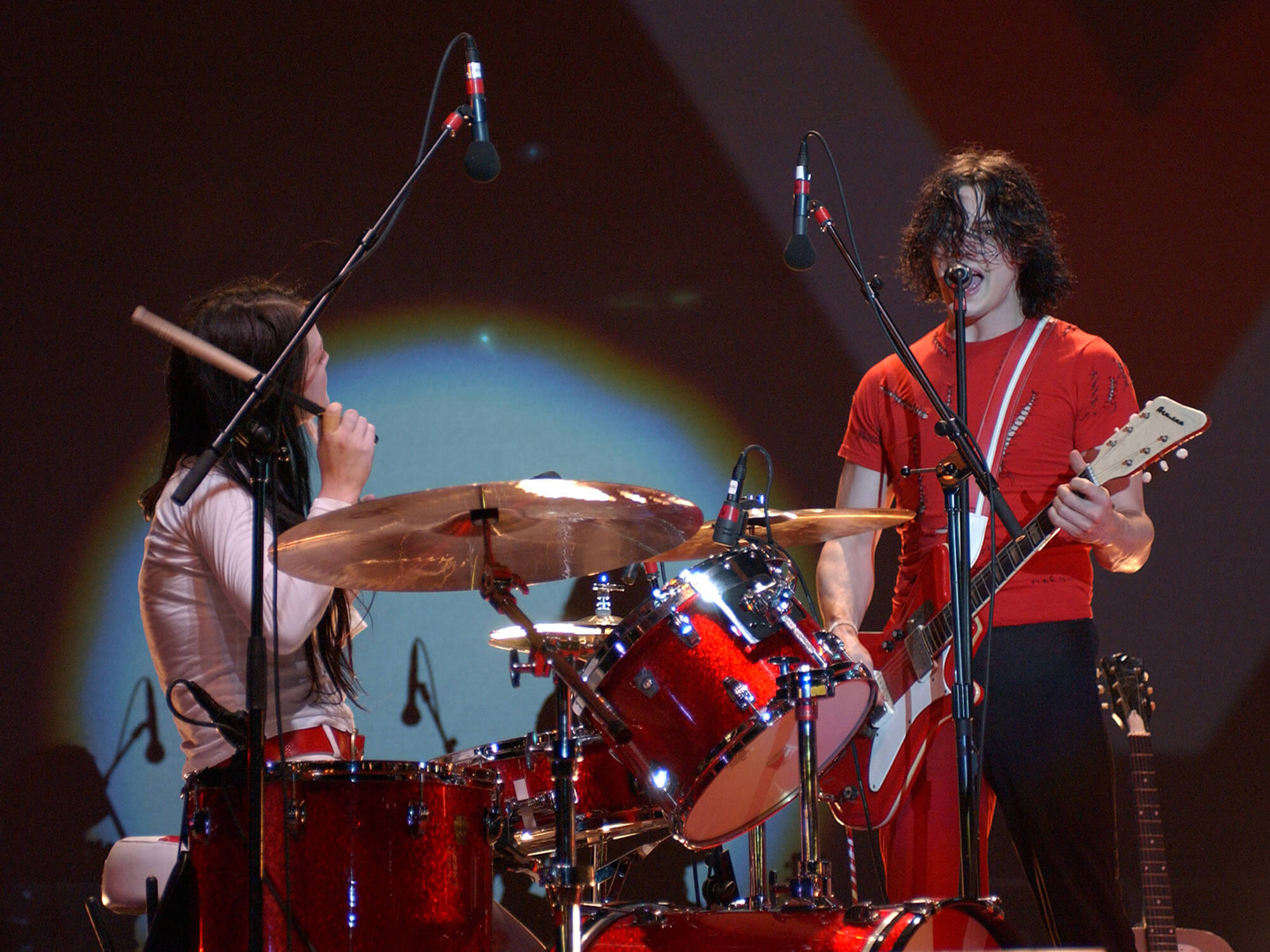
The White Stripes performing in 2003. Image: Larry Marano/Getty Images
As guitar has been the preeminent instrument of popular music for the better part of seven decades now, it’s increasingly rare to find a guitarist who emerges with a sound and approach to the instrument that feels totally fresh and original. Jack White, however, is the exception to this rule – when The White Stripes exploded onto the scene two decades ago, White’s wonderfully messy, noisy approach to blues guitar would sell millions of records and spawn scores of imitators – though few had White’s technical mastery, nor his gift for pushing gear to do musical things that they were never designed to do.
For many Elephant remains White’s high-water mark – and in Seven Nation Army it’s also a record that contains his most famous and most culturally significant riff. Possibly the most culturally significant guitar riff of the last two decades.
As befit a master in full control of his powers, White kept things pretty simple on the gear front for this record – swimming against the grain in an era where guitar music was embracing more and more layering and a lot of “studio magic”. As Jack explained during an interview with Guitar Player Magazine,
“I had the same three guitars in the White Stripes for about ten years: the Airline, a hollowbody Kay tuned to open A for slide playing, and a red Japanese guitar I used for open-E tuning.”
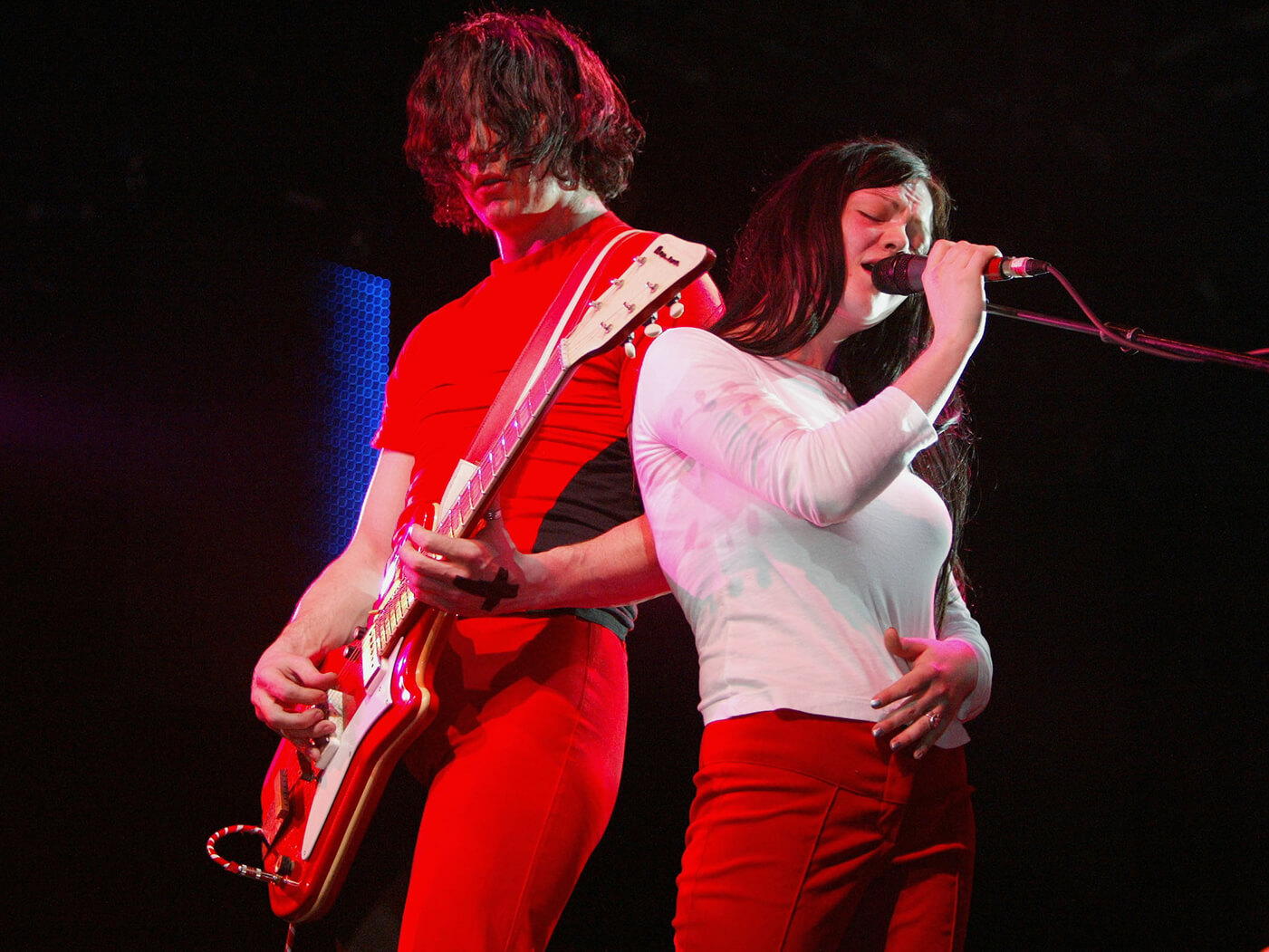
Guitars
1964 Airline JB Hutto
The first and probably most recognizable of White’s guitars during the White Stripes era, and certainly his go-to axe for the recording of Elephant, was his 1964 Airline JB Hutto – a somewhat obscure guitar made of Res-O-Glas. The guitar was made by a Chicago-based company called Valco that made guitars and amplifiers. There were also responsible for making such brands as National, Supro, and Dobro.
Valco made guitars under various brand names from 1940 all the way up until 1968. In 1967, due to financial hardships, they merged with Kay Musical Instruments, which was also based out of Chicago. But both companies went belly up in 1968. Valco was a fairly reputable name in the amplifier market as well – where companies like Harmony, Kay, and Gretsch contracted with them to make their amplifiers.
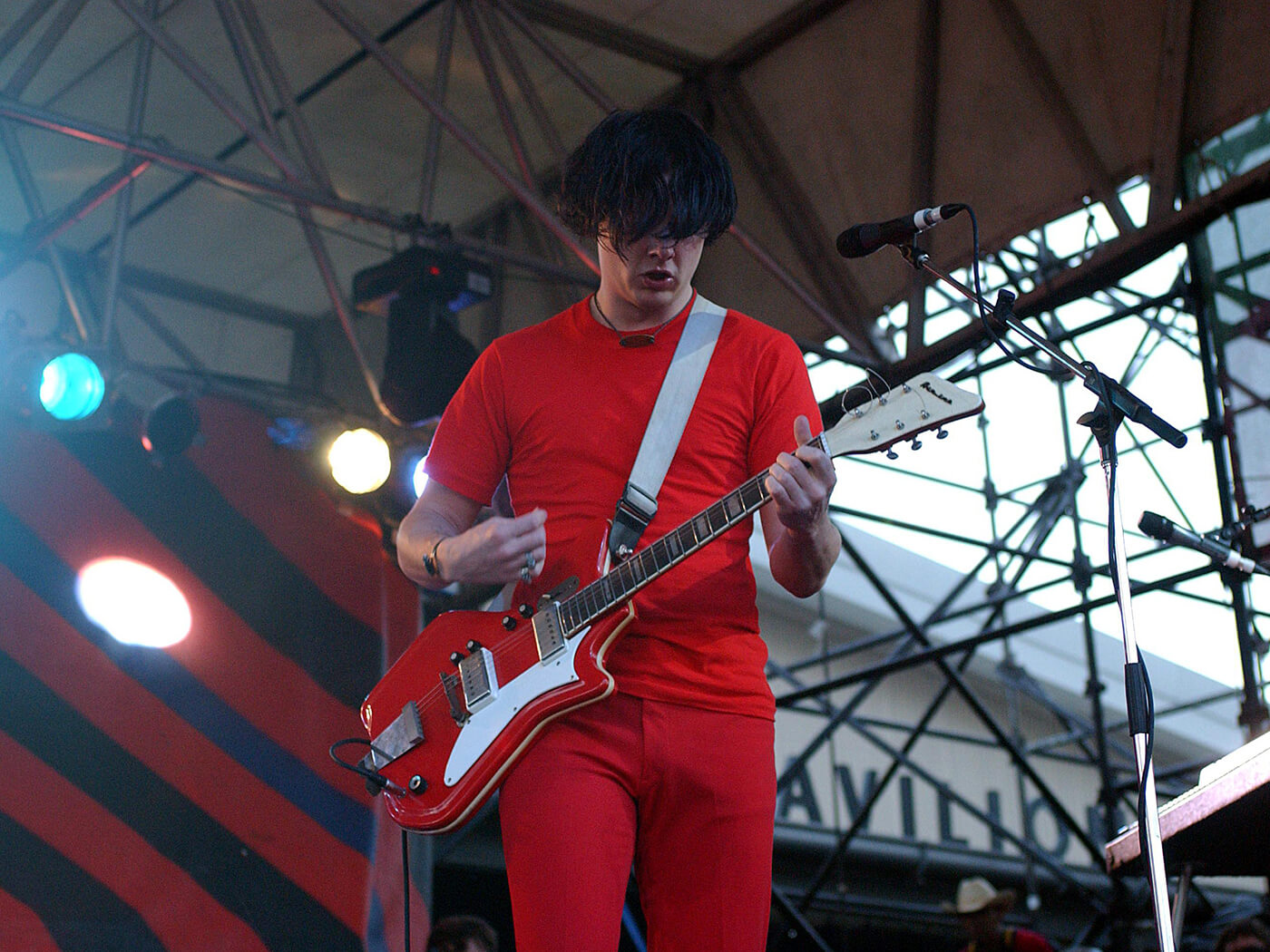
As for the Airline brand, those were made during a ten-year span from 1958 until the company’s end in 1968. While not all Airline guitars were Res-O-Glas, Res-O-Glas guitars were something unique to the Airline brand and were produced between 1962 and their merger with Kay in 1967. In spite of their obscurity, they found their way into the hands of Bob Dylan, Eric Clapton, John Fogerty, David Bowie, and Billy Gibbons. Oddly enough, when they first came on the market in 1964, they didn’t have a model name, but there was a blues guitarist named J.B. Hutto who played one and the model is still unofficially called the JB Hutto Model.
Regarding their construction, they are, essentially, a fiberglass hollowbody, with a piece of maple going down the center for the neck, pickups, and bridge to mount to. The guitar features two Valco single coil pickups which are often mistaken for humbuckers, and no truss rod. It does, however, have a non-adjustable steel reinforced neck. Jack had another 1963 version of the Airline with a shortened scale and only 20 frets. The price tag for an Airline JB Hutto in 1964 was $99 [$977 in today’s money].
In the early 2000s, Eastwood Guitars bought the rights to use the Airline name and have been creating guitars bearing the Airline logo ever since. Great as the recreations might be, they share little in common with the eccentric originals.
1950s Kay Archtop
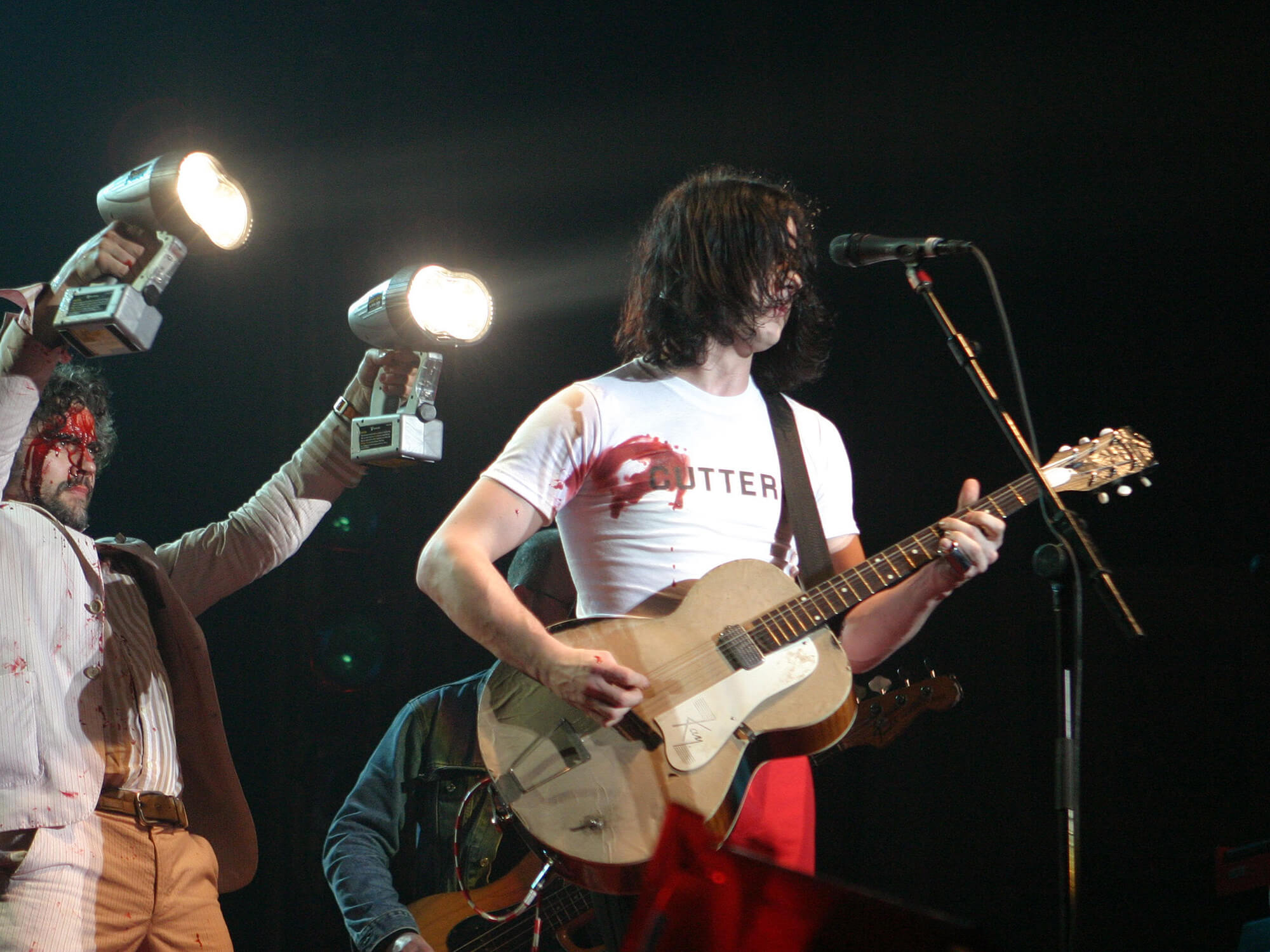
The Kay was White’s main slide guitar, used on songs like Seven Nation Army. He keeps this guitar tuned to Open A. Much like the Airline, model numbers and years are sometimes hard to pin down, but it is believed to be a Kay K6533 Value Leader from the mid to late 50s, based on the shape and existing markers. The guitar was originally a tobacco sunburst, but was covered in Kraft paper in 2001 – supposedly, this was to stop the feedback through the F-holes, though it may be just for the aesthetic reasons.
Either way, Jack has never stated why he did it and has shrugged off the question in multiple different interviews. Kays of that era featured a spruce top, maple sides and back, and a floating rosewood bridge. The wiring consists of a single DeArmond pickup with no controls but an on/off switch. White got the guitar from his brother, who owned a thrift shop, and gifted it to him for helping them move a refrigerator.
1970s Crestwood Astral II
At one point very early in his career, this was his only guitar. He used it for very early stuff like I Fought Piranhas. He kept it tuned to Open E for slide playing. This guitar is a Japanese made model, featuring a plywood hollow body, two single-coil pickups and a tremolo bridge
Amps
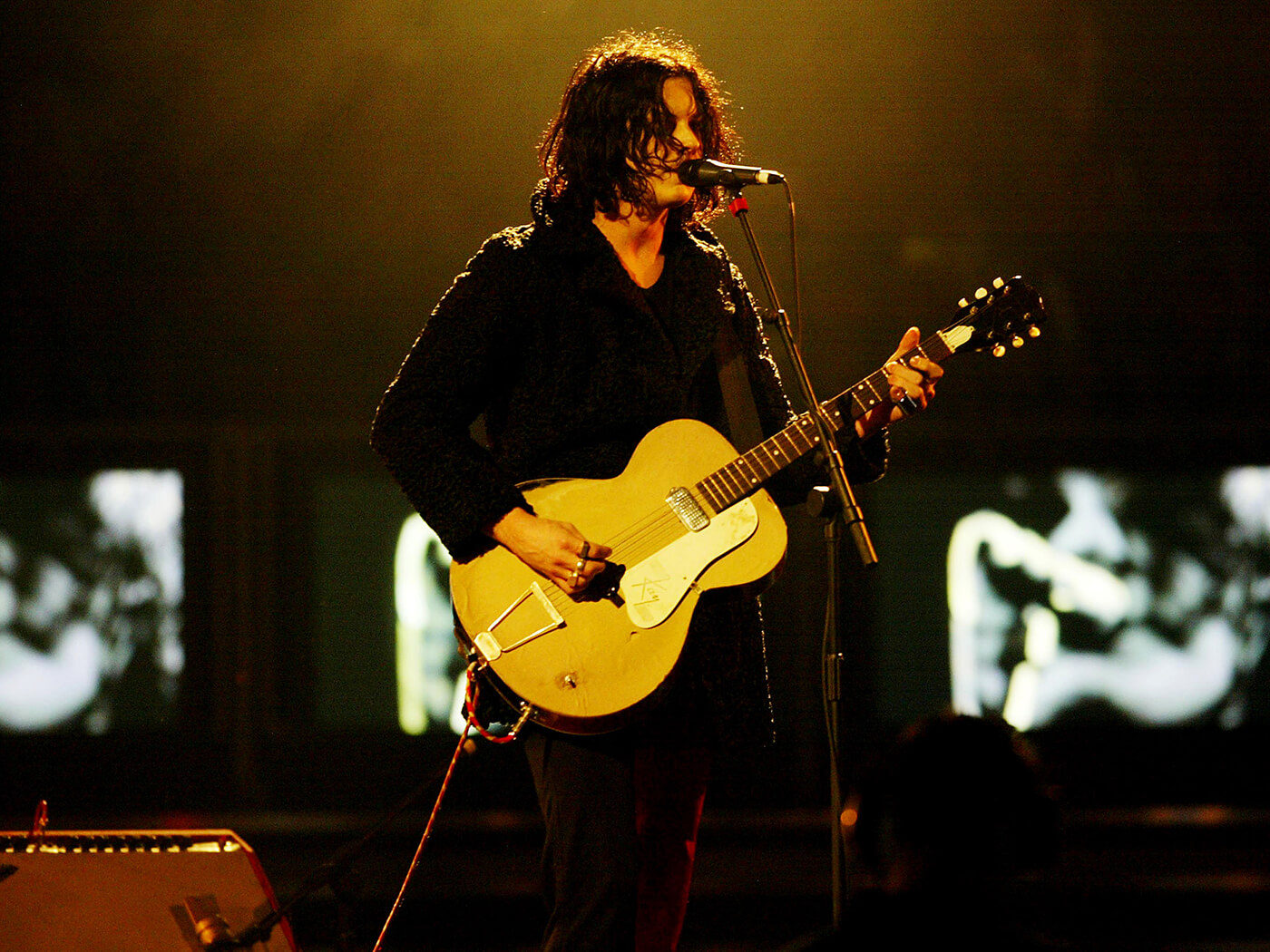
During his time in The White Stripes and beyond, Jack used a Sears Silvertone 1485 Six Ten as his main amp. That amp has reverb and tremolo, but Jack never used it, opting to use the Fender Twin Reverb for the reverb function instead. Those are the two amps used throughout Elephant.
The Silvertone 1485 Six Ten was an interesting beast designed by Danelectro, and sold by Sears, however it was tragically short-lived, being made for only three years, between 1963 and 1966. The matching cabinet originally came with six, 10-inch Jensen speakers (hence “Six Ten”). It had 10 tubes, 5 rectifiers, and put out 120 watts, making it the most powerful tube amp Sears ever made at the time. It was also the most expensive, with an original price tag of $240 [$2,369.78 today].
Effects
During his time in The White Stripes, Jack claims to have only used two pedals – and both were prominently featured on Elephant — a DigiTech Whammy and an Electro-Harmonix Big Muff Pi. Those two pedals present an interesting combination. Seven Nation Army for example, was recorded on the Kay, using the DigiTech Whammy pedal set to the octave-down setting. This was a common setting for Jack’s Whammy pedal – which was probably the most modern thing White used on the album. The Big Muff Pi was used to build up certain parts – it is placed after the Whammy in the signal chain and can be heard on Seven Nation Army as well.
And that’s it – a simple rig for a band that pretty much redefined how stripped down and simplified a rock band could be. But the results speak for themselves.
